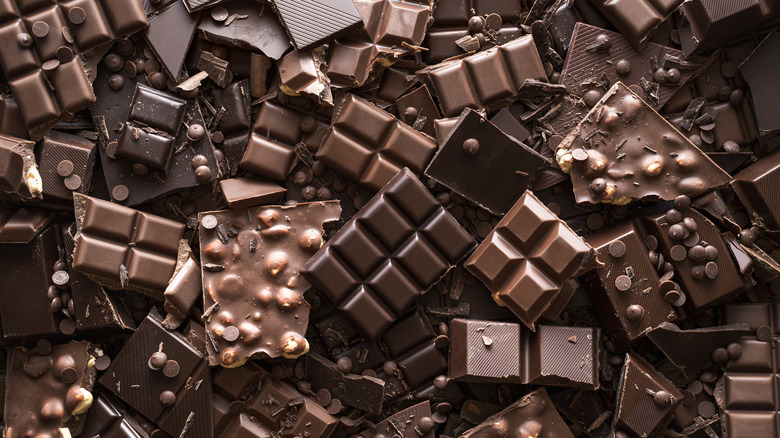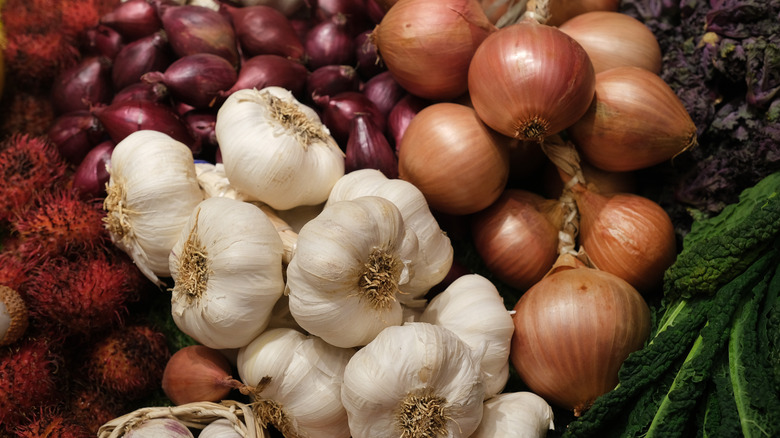The Vegetables You Should Never Store Near Your Baking Chocolate
It's not just baking chocolate. By now, the list of rules about food storage is lengthy: Don't keep bananas in the fridge. They'll brown. (Do keep them in the fridge for banana bread, however.) Don't keep garlic in the fridge; it will go rubbery. Throw unripe stone fruit like peaches, nectarines, and avocados in the ice box at your own peril. They will completely stop maturing in the cold.
Counter space and indoor temperature could be the deciding factor in whether you refrigerate certain foods or not, but then there are rules about which foods can even be neighbors. Raw proteins make obvious candidates for complete quarantine until cooking, but raw produce can create mini disasters too, even for chocolate.
Start with the usual suspects and extrapolate to arrive at why: Potatoes and onions should not kiss before cooking, at least not for long. Why? Onions can make the taters sprout faster. But the tell-tale sign of forbidden comingling hits home in the olfactory glands. And should you keep your chocolate near the onions instead, you might regret it later.
The nose knows
It's the smell. Smells leap from onions to other foods like a startled bullfrog to safety. Onions and potatoes make onion-flavored potatoes. Onions near apples make onion-flavored apples. (Fun side note: Science experiment fans might try plugging their nose and biting into an onion. By plugging the brain's access to smelly volatile compounds which help it detect odors, an onion might almost seem as refreshing as an apple. Home kitchen scientists suggest trying the same experiment with watermelon and cucumber.)
But let's get back to chocolate. In the making of chocolate, cacao pods are cracked open and the seeds are fermented and dried, then roasted and milled to create a non-alcoholic liquor. This liquor of cocoa butter and cocoa solids is typically mixed with sugar, milk solids, and other flavors to create different versions of chocolate. Baking chocolate often uses no sugar at all while white chocolate, on the other hand, uses no cocoa solids. The fat in each case makes the bars extra susceptible to locking in nearby smells, especially strong ones like those found in onions and other related vegetables.
The relationship between fat and flavor
In the battle for smell supremacy, stinky wins. Chocolate has a milder flavor than onions, and its high-fat content guarantees that it will absorb nearby aroma if left nearby for a long enough time period. With the high importance of smell for identifying food, and the pungent qualities of onions, it should come as no surprise: onion odor can seep into chocolate too. Add garlic, shallots, leeks, and chives to that list for good measure. While you're at it, keep the stinky cheese, seafood, or any other malodorous emanations away from your precious bars of chocolate, too. Baking chocolate, as with all chocolate, is best kept in a cool and dark place, but make that place far away from the alliums at the very least.
Say you absolutely had to put the chocolate in the onion bin: Try wrapping it or storing it in an airtight container to keep it safe from other fragrances (though an onion-flavored chocolate cake could be the ultimate prank). Just don't go out of your way using the best baking chocolate if you plan to make it smell like onions.


